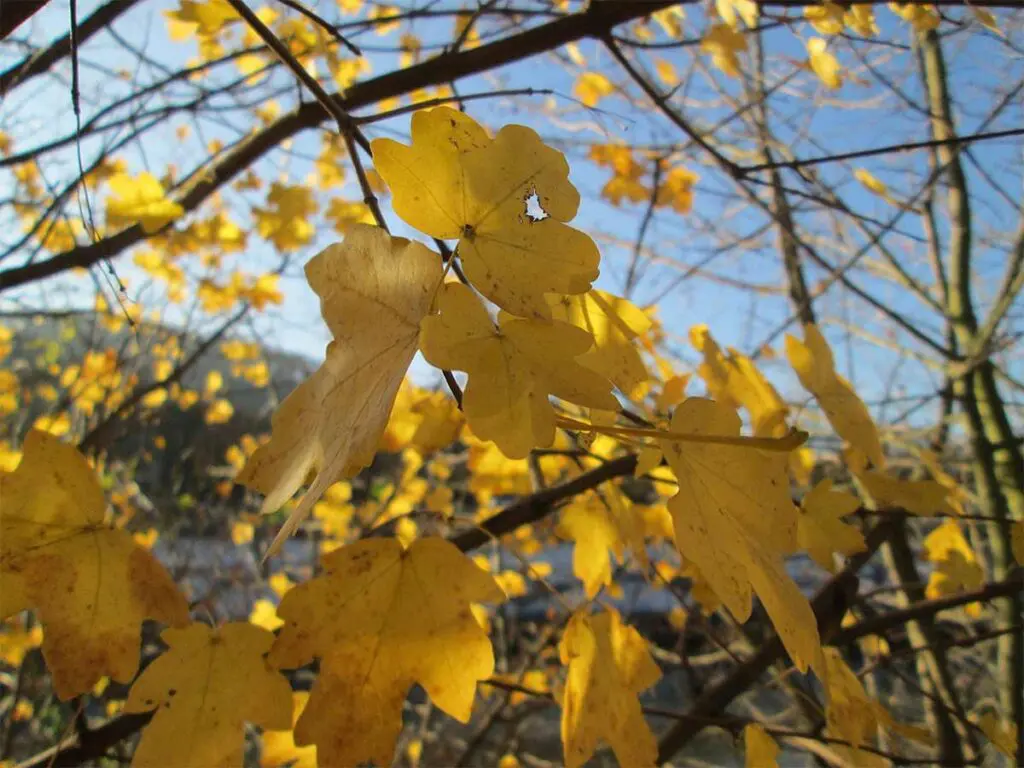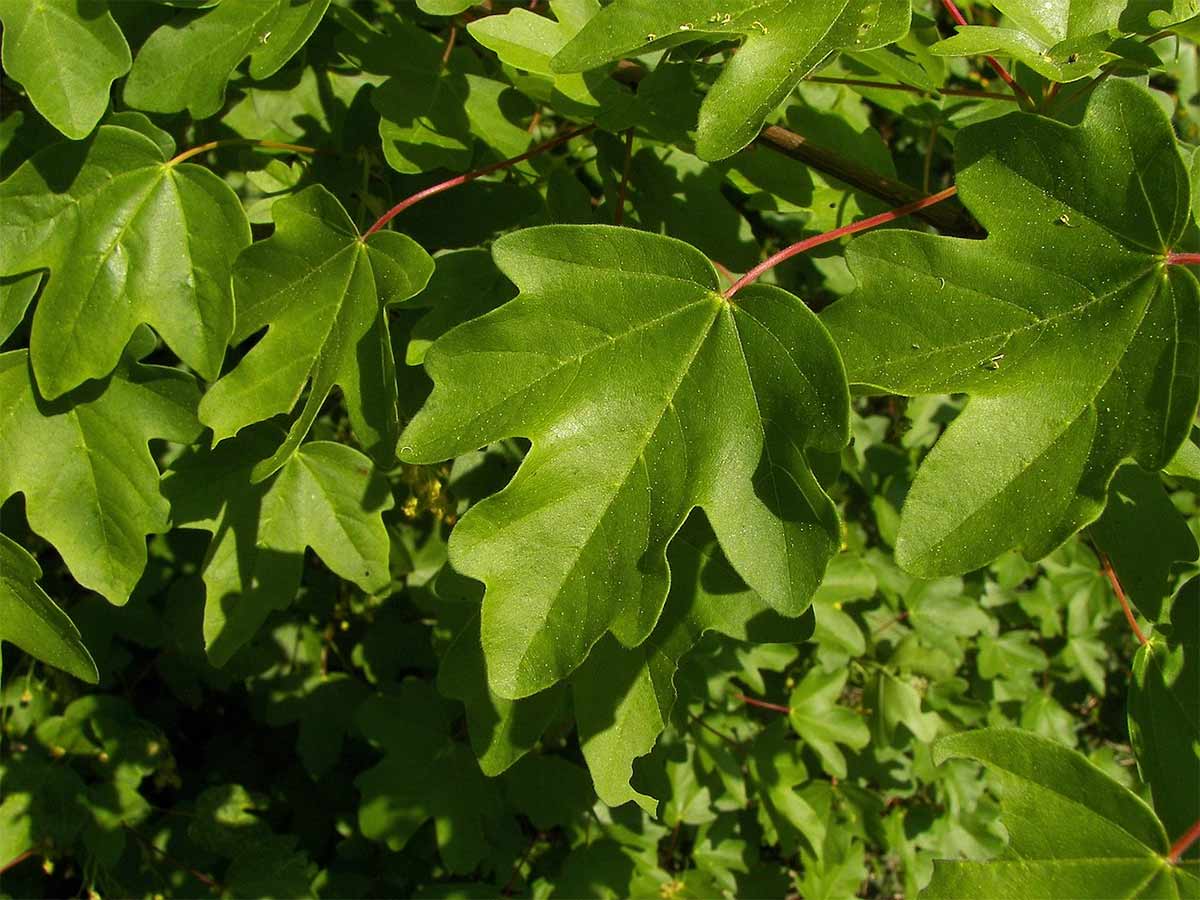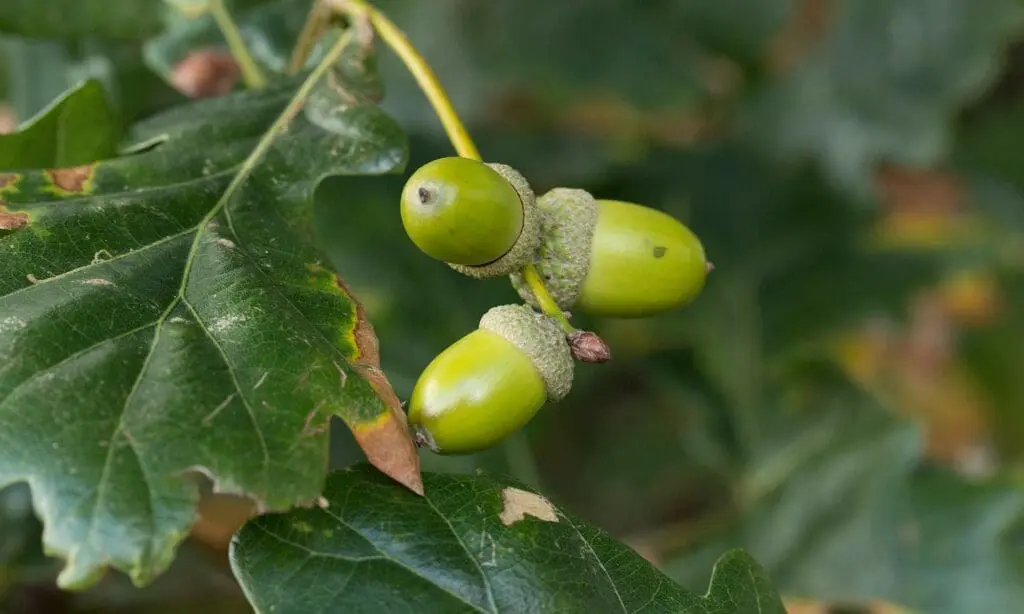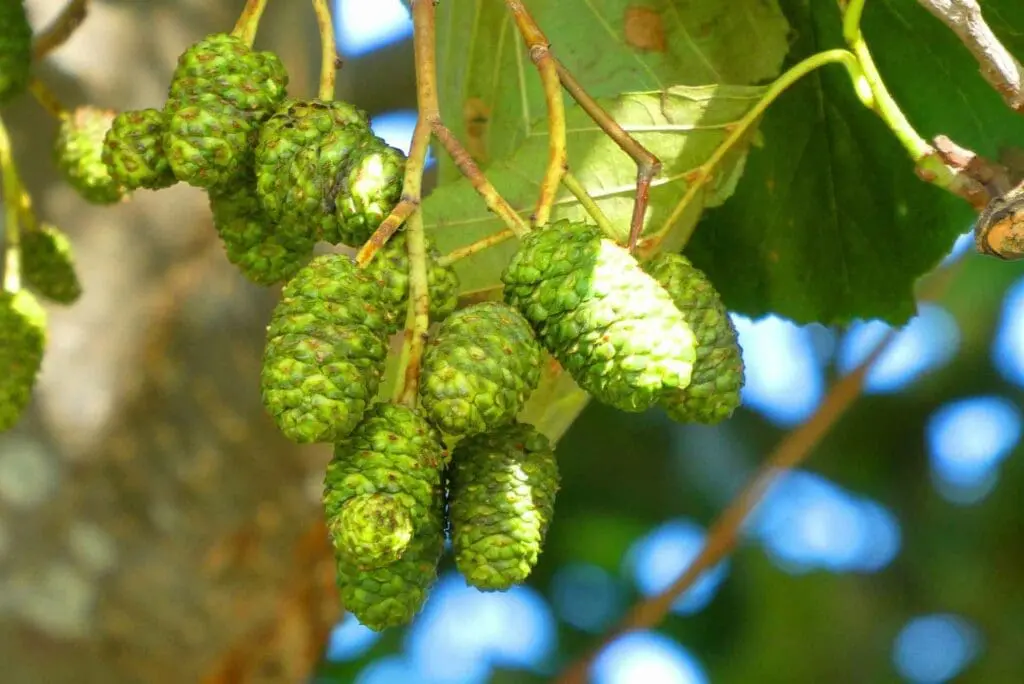- Common name: Field maple
- Scientific name: Acer campestre
- Family: Soapberry (Sapindaceae)
- How to grow Field Maple
Field maple prefers, but isn’t restricted to lime-rich soils. It can often be found in hedgerows and scrub, as well as an understorey tree in woodlands. Field maple is native to the UK, but not to Ireland.
The wood of field maple produces a beautiful veneer and was, apparently, used in the manufactrue of harps (although I can find no evidence of this).
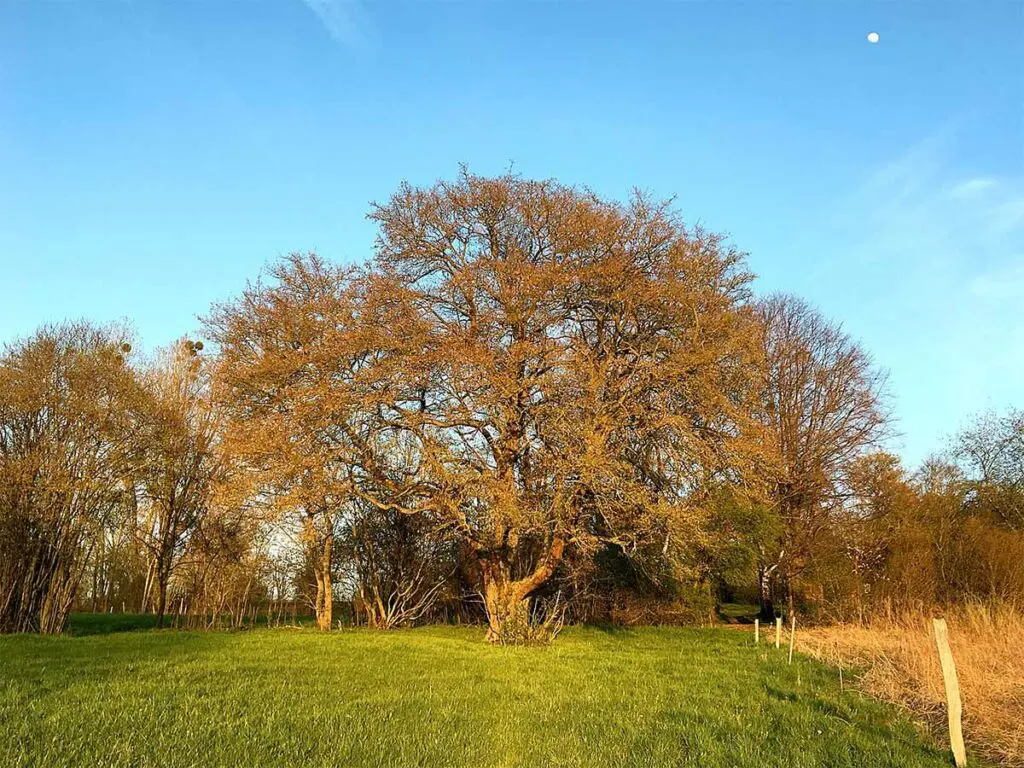
Leaves
The leaf of a field maple has three main lobes and two ‘basal’ lobes – smaller lobes near the stem.
Its lobes are rounded, giving the leaves a vaguely similar appearance to hawthorn.
The leaf stalks are reddish in colour and the whole leaf takes on superb autumn colour – a rich yellow – before falling.
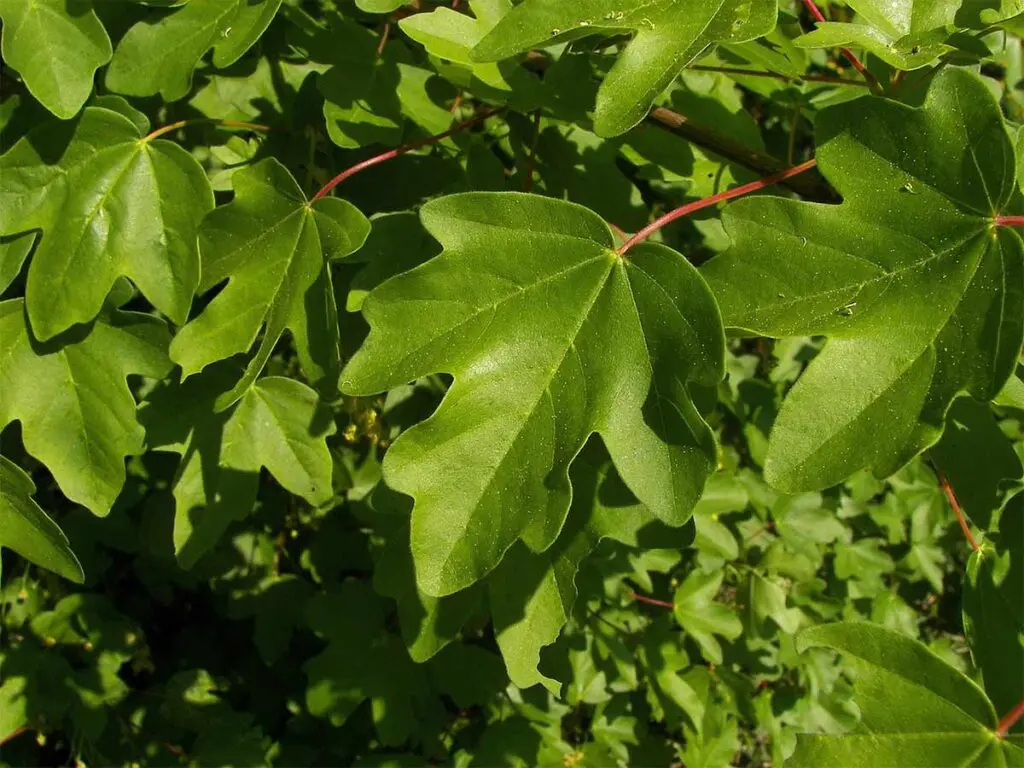
Flowers
The hermaphrodite flowers (male and female parts in the same flower) appear in bunches in May and June. They are yellow-green in colour. The flowers are pollinated by insects and is known to make good honey.
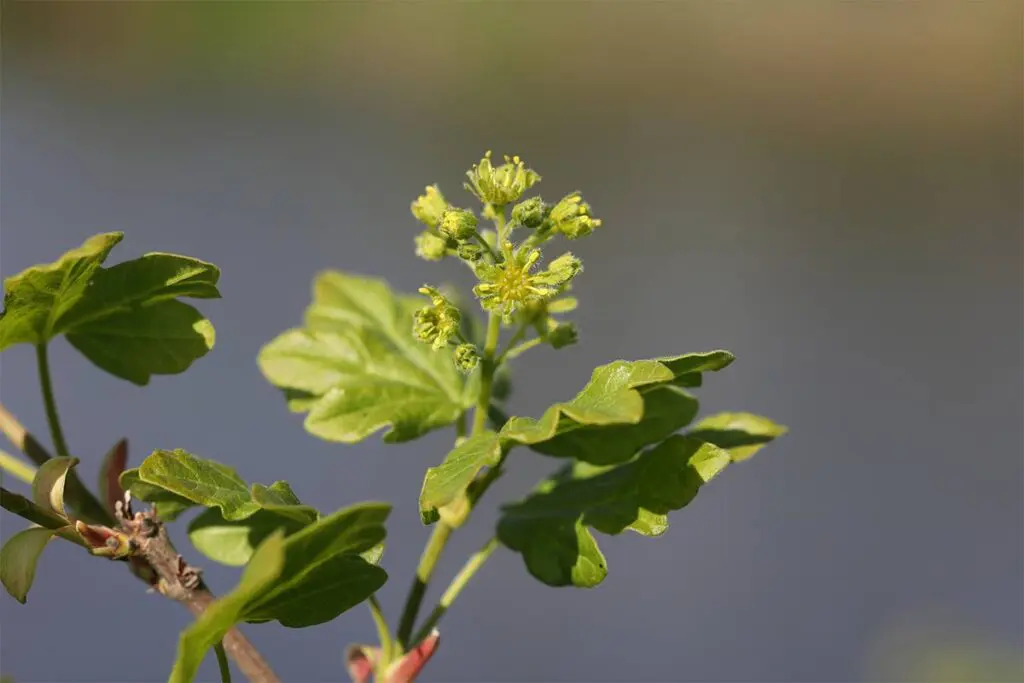
Fruits
The fruits ripen through summer and are ready for dispersal in late September and October when they turn from green to brown.
They hang in clusters (like bunches of keys). Each fruit is about 2.5 to 3cm long – the actual seed is less than half of this length, the rest being a wing to aid dispersal. They are similar to sycamore ‘helicopters’ but the pairs of seeds form a straight line.
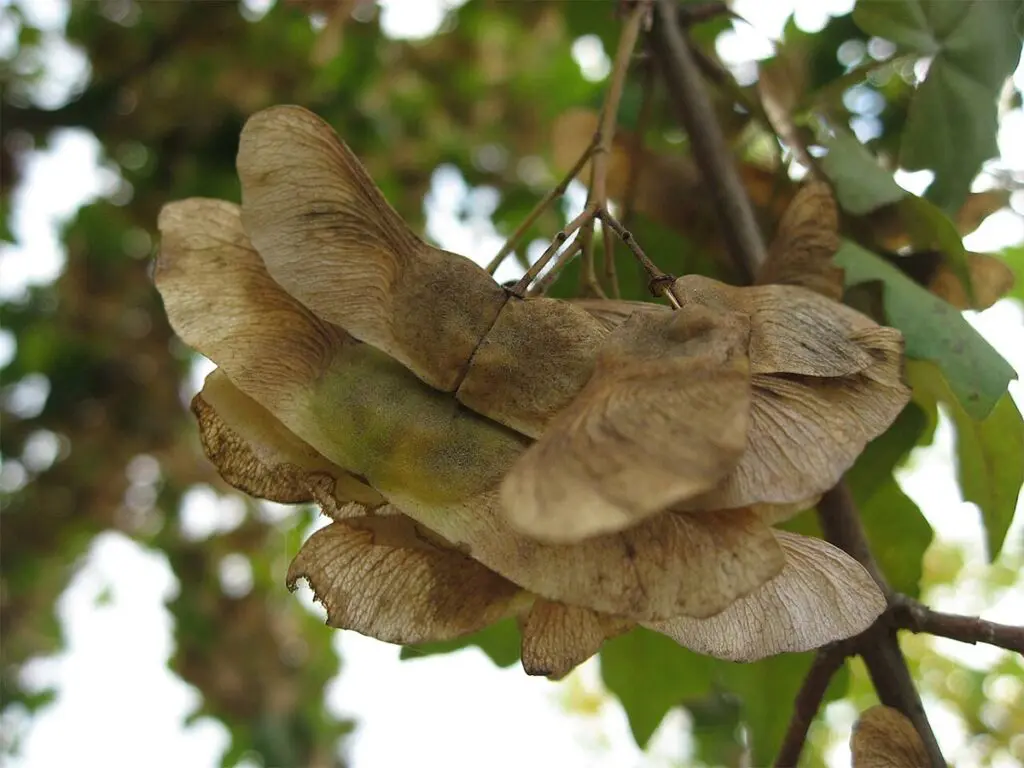
Bark
The bark is light grey or brown, rather smooth and hard with shallow fissures. Small flakes of bark fall off when older. The twigs are often ‘corky’ in appearance.
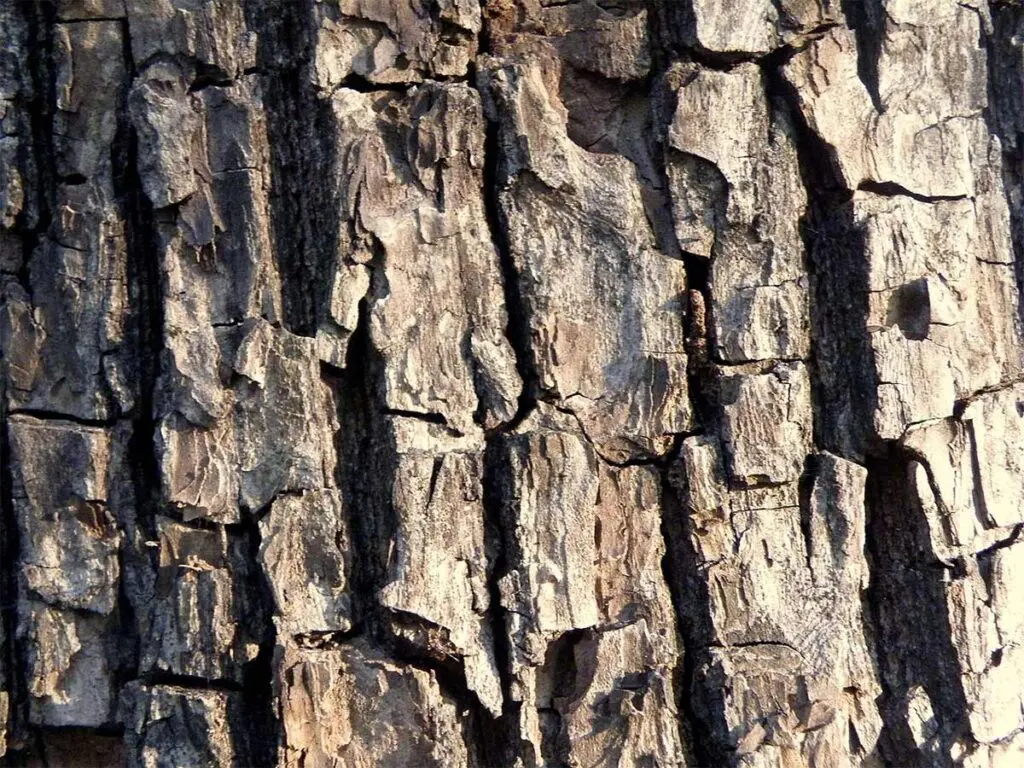
Habitat
Field maple is a medium-sized tree, growing to 15m (occasionally 25m) across many of the warmer parts of Europe. It prefers lime-rich soils, but grows well on clay as long as it isn’t waterlogged.
It grow in association with other trees as an understorey tree, most often with oak, from sea level to 1,600m altitude.
Its seeds provide food for mammals and it supports o lot of moths, whose caterpillars feed on the leaves.
